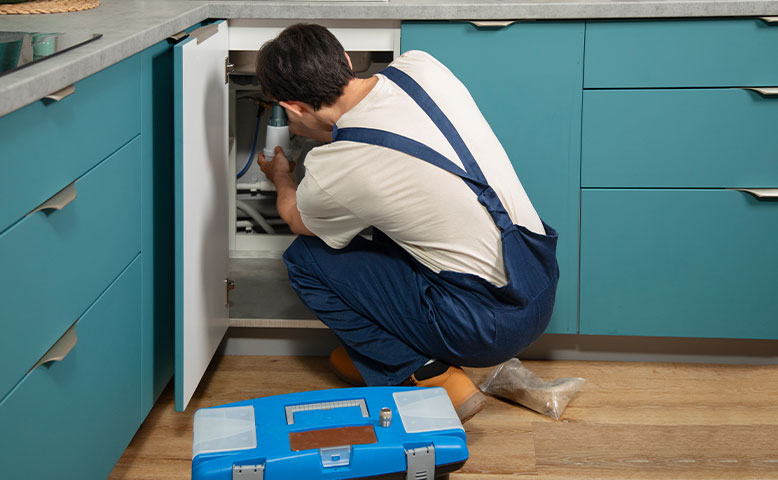Drain backups are the last thing any kitchen wants. They soak floors, slow orders, and invite health inspectors to write thick reports. Yet the cause is rarely dramatic. Most clogs start as thin films of grease, grains of rice, and flat spots hidden inside pipes. Over weeks, the mix thickens, hardens, and stops flow when dinner rush hits hardest. Even a one-inch stand of wastewater can close a service line and force an entire brigade into cleanup mode. The good news: a clear, steady routine stops most of these messes before they start. The tips that follow combine field notes from plumbers, code officers, and equipment reps so all chefs and managers keep pans sizzling, tickets moving, and customers smiling.
Map Every Pipe And Floor Drain Connection
Start by knowing exactly where every pipe runs, how each floor sink connects to the main, and where the cleanouts sit. Pull any as-built drawings if they exist, but do not trust them blindly; remodels often shift lines. Walk the route with a flashlight and a marker. Label branch lines serving dish tables, prep sinks, and mop stations. Write pipe diameters on nearby walls so staff can give clear details when problems arise.
Measure the distance between the farthest fixture and the grease interceptor; many health departments limit that run to roughly 50 ft because cooler water lets fat solidify. If you exceed that length, plan for a second interceptor or add heat-trace cable. Check vent lines, too, since poor venting slows flow and lets waste sit. A pocket-sized map posted near the control panel removes guesswork when an auger crew shows up at 2 a.m.
Schedule Routine Grease Trap Pumping And Skimming
Grease is the top culprit in kitchen backups. Even a film one-quarter inch thick on pipe walls can cut flow by half. That is why code state traps must be cleaned once they reach twenty-five percent of their volume. Under-sink boxes fill fast—often within a week—while large interceptors may last a month.
Build a clear calendar:
Weekly: Lift the lid on small traps, skim floating fat, and scrape settled solids.
Monthly: Pump exterior or basement interceptors, then flush with 140°F water for two minutes.
Quarterly: Inspect gaskets, baffles, and sample-tee caps; change any warped parts.
Annually: Remove the entire unit, power-wash, and record its condition for insurance files.
Routine service keeps pipes open, trims odor complaints, and prevents costly fines that arrive with surprise inspections.
Control Food Scraps Before They Reach Sinks
Solids settle in pipes, gather grease, and form stubborn plugs. Keep them out from the start. Fit every prep table with bins for peelings and install sink strainers with one-sixteenth-inch holes. Train staff to scrape plates and pans dry before rinsing. Grinders may tempt you, but disposal units raise suspended solids that gum up traps. Instead, use a sealed scrap tank that farmers can collect for feed.
Remember that flour and coffee grounds swell when wet; sweep them into a separate container. During peak periods, place a runner whose only task is to empty strainer baskets and scrap bins before they overflow. Removing solids at the source extends trap life and can trim pumping bills by up to thirty percent over a year.
Maintain Correct Pipe Slopes And Accessible Cleanouts
Gravity does the heavy lifting in a drain line, so long as the slope is right. Plumbing codes call for at least one-quarter inch fall per foot on lines three inches and smaller. Less slope lets sludge settle; more slope lets water outrun debris and leave it behind. Use a digital level to check each run from sink to stack.
If you find bellies, the low spots that collect water, cut them out and hang new pipe with strap hangers spaced every four feet. While working, add a two-way cleanout on each long horizontal stretch. A removable cap gives plumbers a straight shot with a jetter nozzle and saves you from opening walls when time is short. Proper slope plus easy access equals quicker service calls and fewer after-hours emergencies.
Use Temperature To Dissolve Fats And Oils Safely
Hot water alone will not keep drains clear, but it can help when applied wisely. Keep dish-machine rinse at 160°F and make sure the final drain line runs straight to the interceptor. Once a week, schedule a thermal flush during low-service hours. Close the upstream valve, fill the run with 140°F water mixed with a mild enzyme product, and hold it for ten minutes. Heat softens congealed grease, while enzymes digest the film that coats pipe walls.
Finish with a cold rinse to carry loosened residue into the trap. Never pour boiling oil down a sink; it floats and cools farther down, forming a waxy plug. Smart thermal cycles give another layer of protection without harsh chemicals.
Install High-Flow Floor Sinks With Mesh Screens
Floor sinks often go unnoticed until water pools around them. Many older units have two-inch outlets, yet today’s steamers and dish tables discharge at far higher volumes. Replace undersized sinks with models that feature three- or four-inch outlets and dome strainers that stop silverware from sliding in. Set the rim half an inch below the finished floor so wash water drops straight in. Fit the grate with a stainless mesh screen and ask staff to empty it every shift. A screen that traps one cup of rice a day keeps twenty pounds of sludge out of pipes each month.
Choose epoxy-coated cast iron for long service life.
Specify removable domes for quick cleaning.
Order NSF-listed units to satisfy health officers.
Train Staff On Daily Drain Maintenance Routines
Hardware fails without habits. Build a short checklist and make it part of closing duties. Small tasks save thousands in call-out fees:
Empty strainer baskets and mesh screens; bag contents before disposal.
Run twenty seconds of hot water after each sink cleaning to move soap scum.
Pour a bio-enzyme packet into the mop sink once each day.
Log any slow drains or odd sounds in a notebook near the clock.
Review the log every week and act on issues before they grow. Turn drain care into a friendly contest; the station with the cleanest record earns a snack voucher. When staff view clear drains as their own win, backups become rare.
Conclusion
Smooth drains keep cooks moving and guests happy. By mapping lines, clearing grease on schedule, controlling scraps, keeping a healthy slope, using heat wisely, upgrading floor sinks, and coaching the crew, you cut the risk of a shutdown to near zero. If a stubborn clog still sneaks through, call Royal Design Remodel Repair Inc. Our plumbing team carries jetters, cameras, and replacement parts to restore flow fast and let your kitchen focus on great food instead of dirty water any night, weekend, or holiday.

